| |
|
St
Thomas, Norwich
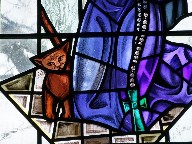 |
|
Ewan
Christian built this church for the new middle
class suburbs off of the Earlham Road in the late
1880s. The busy traffic streams out in the
direction of UEA and the A47, and St Thomas sits
quietly looking down at it from its imposing site
above the road, a large, low church. There is no
tower, and there is a restraint in the triple
lancet of the east window, and the elegant
Decorated style of the aisle. As Pevsner says, it
is definitely Late and no longer High
Victorian. We would be building churches
that look like this until well into the 1920s. When I
first tried to visit in 2009, I found St Thomas
closed and undergoing a major refurbishment. So
it was with some excitement that I came back here
in the early spring of 2010. St Thomas is unusual
in the inner Norwich suburbs in that it is open
every day - militantly so, with a big flourescent
orange sign telling you so. Given that we are
less than half a mile along the Earlham Road from
the similarly militantly open Catholic Cathedral,
this way into Norwich serves well the pilgrim
with a spiritual thirst.
|
You step
into a big, wide, open space, full of light and air. It
is enchanting. The crispness is almost entirely a result
of the events of the night of 27th June 1942, when the
western side of Norwich city centre suffered intensive
bombardment by German bombers. St Thomas was one of half
a dozen Norwich churches to be destroyed that late spring
and early summer. It was completely gutted, with only the
outer walls left standing. It took ten years to be
rebuilt, to the design of the Norwich firm Wright &
Mason. What you see today is entirely the work of the
1950s and 1960s, which explains its Festival of Britain
confidence, a near jauntiness.
The great
treasure of St Thomas is Norwich's best collection of
modern glass outside of the Anglican Cathedral. It is
largely the work of the King workshop, and is the largest
collection of King glass, again apart from the Cathedral.
The best of this is in the south aisle, a sequence of
East Anglian Saints of the 1960s and 1970s, the most
notable of which is the image of Dame Julian of Norwich
with her cat, which is often reproduced in books of her
writings. People think it is in the cathedral or in the
Julian shrine, but it isn't, it's here. Some glass in the
baptistery, which I think may be by GER Smith for the AK
Nicholson workshop, depicts the anointing of David, the
Annunciation, the Presentation in the Temple and the
Baptism of Christ, and remembers members of the
congregation here. There is also glass by the William
Morris of Westminster workshop, theirs is the vast and
near-psychedelic story of the martyrdom of St Thomas in
the main east window.
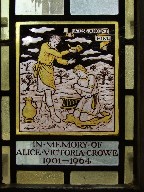 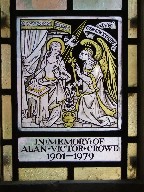 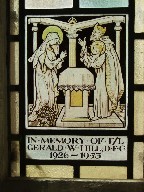 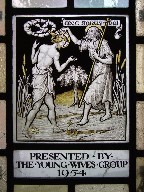
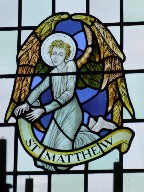 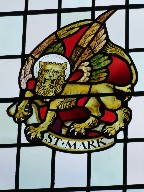 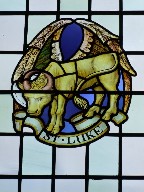 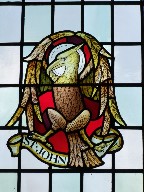
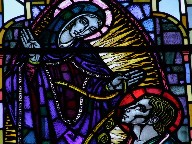 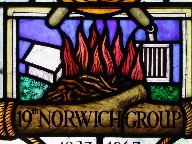 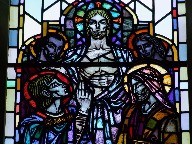 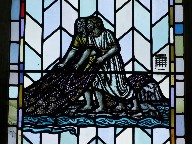
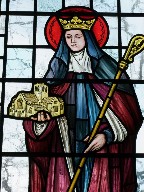 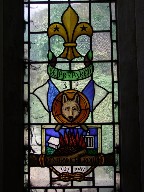 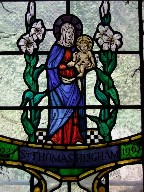 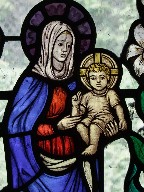 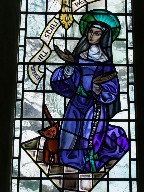
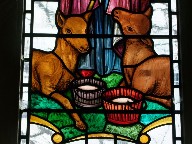 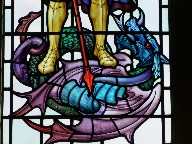 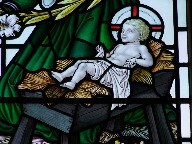 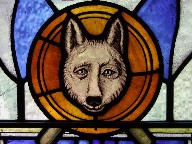
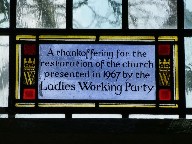 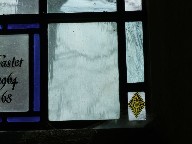 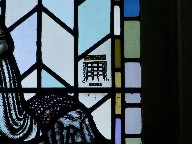 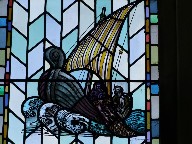
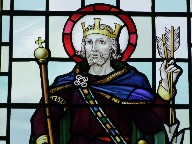 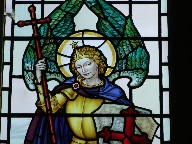 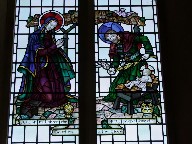
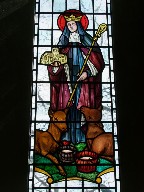 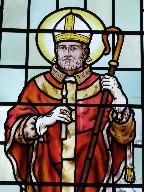 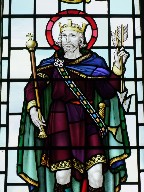 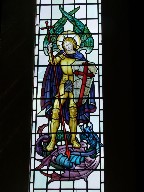
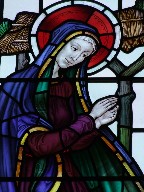 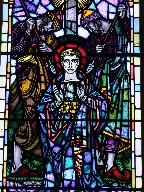 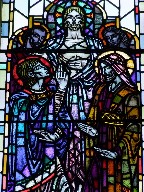 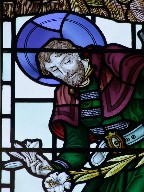
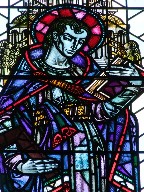 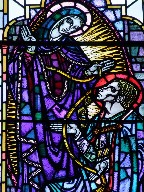 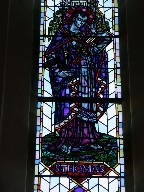
There is a particular smell to interiors of
the 1950s and 1960s, something to do with the floor
polish perhaps, which I find intensely evocative, taking
me back to the self-confident institutions of my own
childhood, and more recent visits to the likes of
Coventry Cathedral and Liverpool Catholic Cathedral. The
light wood of the floors and furnishings, and the white
of the walls and ceiling, all contribute to this effect.
I wandered around this wide interior with my heart
lifted. That this is one of the most welcoming churches
in the city only adds to the feeling.
| A
cross carved from a charred beam in a niche in
the south aisle remembers the events of that
summer night, and a display nearby records this
church's close relationship with a similar church
in a German city. St Thomas's Vicar Philip Young
is a noted pacifist and Quaker, and the sense of
peace in this place seems entirely appropriate. At the east
end of the building, facing into Edinburgh Road,
the dedication stone reads To the Glory of
God in memory of the Holy Apostle St Thomas this
stone was laid in the name of the Father and of
the Son and of the Holy Ghost by John Thomas Lord
Bishop of Norwich 28th October 1886 -
"Blessed are they who have not seen and have
yet believed" . That may be so, but I
was really pleased that I had seen inside at
last.
|
|
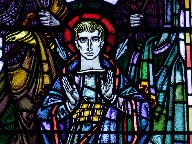 |
|
|
|
